Leaderboard
Popular Content
Showing content with the highest reputation on 04/24/2025 in Posts
-
It’s clear on the agenda your pretty much on your own for meals. Other than the opening ceremony meal which is provided at no cost to those who have registered. The lodge has breakfast and dinner available, naturally pay as you go. We typically skip lunch and enjoy a late breakfast and dinner at our site. There are a few local restaurants in Guntersville, check reviews. https://olivertraveltrailers.com/events/oliver-owners-rally/ Safe Travels! 🇺🇸4 points
-
3 points
-
The TOSOT AC is manufactured in China. Hopefully not at the same factory where the OTT springs are made.2 points
-
I'm seeing $1200 with shipping. https://www.amazon.com/TOSOT-Conditioner-Non-Ducted-Rooftop-High-Efficiency/dp/B0CDWR5RP9/ Still less than $1500 total on the Atmos (with $150 shipping, no SoftStart on either). https://www.sdgelkhart.com/product-page/atmos-4-4 I witnessed @Ronbrink's installed Atmos and it was excellent. Still not sure the Tosot is of the same quality. Right now, maybe $300 more on the Atmos to be sure with reputable US rep in SDG. I would love the Greenland inverter A/C that @CRM is also interested in. If I was to learn it is quieter than some reviews show. And I too am waiting another year.2 points
-
2 points
-
The last two years some of the vendors have provided box lunches or light breakfast, but that's not shown on the schedule this year. Last year there was a potluck dinner that's also not listed this year. We find planned dinners don't go as planned due to lots of gabbing, so be flexible.2 points
-
The above response to your question from @Steve Morris is a very practical approach to ensuring adequate power to a TV-staged fridge/freezer unit, especially taking into account longer run durations with use of the OTT’s battery bank. My approach was somewhat similar, however my former TV had a 200W solar array atop the bed cap for the specific purpose of helping to keep a homemade 100Ah LFP power station sufficiently charged for extended use. I can get 33 hours of continuous run time on the PS alone, and as much as 48 hours when the solar input was optimum. But at some point the PS would need a supplemental charge and thus, an AC powered battery charger came into play either upon reaching a campsite with shore power or via the OTT’s inverter power. I installed a forward-facing AC outlet on the propane tank housing for the same purpose @Steve Morris plans to install a 12v Anderson, but in my setup I utilize the inverter when underway to supply AC power to my Dometic CFX 75DZ, as needed. Since I have yet to install solar on my current TV, supplemental charging of the PS is provided via an extension cord from said outlet into the van to power a Victron 30A Smart charger connected to the PS. Although this setup works great when the Oliver is in tow, pending install of solar on the van rooftop is needed for other lengthy travel times or when venturing away from camp and AC power is unavailable for supplemental charging. Remote charging of PS:2 points
-
I am posting this for my friend Coy Gayle... I owned a 2014 Elite and decided to upgrade to a new 2024 Elite. I have always kept my trailer housed in a heated and cooled garage. There was not room in the garage for both trailers so I bought a new Calmark cover so that one trailer could be housed and the second protected under the Calmark cover. During this process, I had a friend contact me about buying the 2014 Elite and we made the deal. I had not anticipated the trailer would sell so fast and my friend came to my house picked up the trailer and took it home. I now have the Calmark cover in my garage, still in the original box, never opened or used. I have no need for it so I am offering it for sale at a considerable savings. The retail price of a Calmark cover with a zipper door is $1,152.00 plus shipping and handling S&H. I will sell the one I have for $700. I will be attending the Oliver Travel Trailer Owners Rally at Lake Guntersville, Alabama next week and will have it with me. If interested, you can purchase it from me at the rally or I can ship it to you for $700.00 plus shipping and handling. This is a savings of $452.00 for a brand new high quality Calmark cover for an Oliver Elite. I guarantee that this is an original Calmark cover, never used, and box never opened. If you have questions, please e mail me at Coy.gayle@gmail.com. I will reply or if you want to chat, send me your phone # and I will return your call. Coy Gayle2 points
-
Do you mean like - THIS or THIS or THIS or ???????? Simply type in the "Search" box at the top of the page the words "quick connect" and start looking. Bill2 points
-
Hello All, My wife and I purchased Hull #1553 at the end of February. The trailer is a 2024, Legacy Elite II. We have already been on one trip with it. Love this trailer! Cant wait for the next trip. I have been browsing all the forums and am excited to be part of this community.1 point
-
1 point
-
I've noticed that you have not received any replies to your question. Perhaps others are having a bit of the same difficulty that I'm having in understanding exactly what you are having trouble with. Pictures might help. Which Ollie do you have to include the year and floor plan. Have you tried a bit of WD-40 or anything else of that nature? Bill1 point
-
Gary- looks like the tariffs are hitting all of them. Was getting reading to order a Greenland Inverter AC unit and the price jumped $300 overnight. On top of that, now they're out of stock at the moment too. Think I'll wait until the tariff situation is resolved and hope my 16 year old Coleman holds out a little longer...1 point
-
1 point
-
1 point
-
We usually do the opening dinner and then meals at our trailer. Like Patriot, we do a late breakfast and early dinner and that’s it. Mike1 point
-
1 point
-
The first George Strait concert we went to was in 1985 in the Killeen High School auditorium in Killeeen, TX just outside of Fort Hood. Amarillo By Morning was his big hit then. We went to another concert a few years ago, to hear a 70+ year old George and he didn’t miss a beat. Over 2 hours of singing and he finished as strong as he started. He lives near us and is very active in the area. He’s authentic. Mike1 point
-
We use quick connects on our freshwater fill without issues. We seldom connect directly to city water. There are two good quality quick connects that we've used. One is the design from McKillans (typically stainless steel) and the other more common one was from Camco (typically brass). We haven't used the Eley brand mentioned above. None of these have backflow check valves, so there's some leakage upon disconnect. The Camco and McKillans types are similar but not compatible with one another. We used the Camco connectors until we added a Blue Technologies water softener and hose reels. Blue Tech has McKillans style connectors and a mix of NPT 1/2 inch and garden hose threaded connections. The Blue Tech softener and reels, along with a Clearsource water filter system, are mounted in our TV and are used to fill our fresh tank. Steve1 point
-
My latest project. The weather hasn’t cooperated enough to get time to get much done before heading to Alabama, but I’ve made a start. 12V DC and 115V AC outlets hidden behind the drop down table. Not wired yet, so I’ll see if I can get that done. Im still planning on a 12V DC Anderson outlet down low on the front of the propane cover for the truck fridge, and a 115V AC outlet on the street side But those will be after the rally. I definitely need the 12V before an eight day no services outing in the Adirondacks in June Stop and see us in Curiosity on site G231 point
-
Always been a big George Straight fan….true country music. Fond memories of Gruene Hall, a small venue in New Bruanfels, Texas. It’s where I proposed to my bride before being deployed to the Gulf War. We are still fans of the late Hal Ketchum and were regulars supporters of his music. He was playing one night at Gruene Hall and I mentioned to him during a break that I had proposed to Kathy. Hal dedicated this song to us on our special night…”Old Soldiers”.1 point
-
1 point
-
That’s a very fair price. We are really happy with our Calmark Cover. 👍🏻1 point
-
1 point
-
Yes - more than can be counted here. It all depends on how many Ah you want/need, how much money you want/can spend, how many "features" you want/desire, etc. All of this requires a bit of homework but is really not all that difficult. Measurements for the existing tray can be found here on the Forum as well as a number of threads showing what other owners have done and how they did it. Bill1 point
-
I simply disconnected the power wire at the 7 pin connector and bent it back. I was experiencing intermittent trailer brake disconnect messages on my dash and part of my trouble shooting (while camping in Colorado) was to open up the 7 pin connector and check the trailer brake wire. While doing that I took care of the charging wire. There are other threads on the trailer brake disconnect issue. BLUF, it was the wire inside the axle that connected the brake pairs, it had frayed and was shorting the connection. This has happened to several Oliver’s owners with early hull numbers. Mike1 point
-
Wow, it's been 3 years since Mike asked this question (before my time), unanswered back then in this older thread from @John E Davies. Although Mike did not get an answer in this particular thread, he certainly knows the answer now. Gary, please allow me to point you to another thread where this was asked/answered more recently. Another Oliver owner @tallmandan started the post below and like you, he has recently worked a LiFePO4 upgrade.😂 See my March 15 comment in the post below, in how to resolve this. @Derek B suggested another method in disconnecting it at the the hitch terminal. Bill @topgun2 suggested in some tow vehicles, you could pull a fuse for this connection. However, professionally speaking the best way is to disconnect it at the Oliver bus. Most of the time, leaving it connected would not cause harm. But if/when your LiFePO4 batteries are low in SOC and connected to the tow vehicle harm could be caused. When towing the smaller 12 AWG wire could overheat if the house batteries were pulling too many amps. When camped and you left the trailer connected to the TV (which I often do for 1-night stays) and the house batteries got very low in SOC (running A/C), they would drain your starter batterie(s) keeping you from starting the engine the next morning.1 point
-
I came across the following post by a member of the iRV2.com community, by CC220 and dated April 2024, which may be of interest to some. Yes it is very lengthy but interesting, so if so inclined give it a read. As an owner, I concur with this author’s overall assessment of the Drieha Atmos 4.4 and look forward to furthering my personal experiences this coming summer. I just returned from SDG in Elkhart, IN ...after having the Dreiha Atmos 4.4 rooftop AC installed in place of the Dometic Penguin II our Coach House Platinum 220TB had been equipped with. Floridians and others living in the southeast, know full well the sweltering heat and oppressive humidity these climate zones generate in the summer, and their demand for consideration when scheduling outdoor activities and travel plans. Reducing the palpable humidity and creating a light breeze, immensely improves the air quality and comfort coefficient ...even when the temperature is lowered by just 2 or 3 degrees. The prospective ability to mitigate the steamy southeastern summertime 'misery index'...is what originally captivated my interest when reading about the Atmos 4.4 on the LTV FB owner-enthusiast forum. The unit is amazingly quiet, and I could envision an owner mistakenly leaving the unit powered on ...believing it had been turned off. Apparently, there is an 'LED light function' but appears available only when the unit is installed in a ductless configuration. (No part of the actual unit is exposed in our rig's ducted system mounting ...just a flush mounted filter cover. Admittedly, there are some 'unknowns' pertaining to the Dreiha corporation and their products, but obviously not of the type that dissuaded me from purchasing. Dreiha isn't (yet) a household name in this country, and in like fashion; Truma, required several years to attain brand recognition within the RV industry and amongst RV shoppers. Possibly adding to consumer name recognition challenges, is my understanding that the Atmos 4.4 is marketed and sold under another name ...as a virtual twin. We don't yet have access to sufficient user feedback in this country to evaluate long term reliability, but SDG owner; Kevin Searer's commendable reputation and the very favorable impression I received from him, leaves me confident that product warranty support won't be a problem. I'm glad to see Kevin and his great crew receiving well deserved recognition from the LTV community, and seeing more partnerships developing through which Dreiha brand HVAC products can be distributed, installed and serviced. To my knowledge SDG has expanded their dealership distribution network into Florida (CTM Customs) and if I recall correctly, a Solar-RV systems company in Texas. I thought it worthwhile to share some test results which compares operational efficiency of the Dometic Penguin II against the Atmos 4.4 AC. When using the Atmos AC function in either 'Dehumidifier' or 'Auto' mode ...its compressor and fan will alternatively cycle on and off during preset work intervals, greatly reducing an otherwise, constant high amperage power draw. The alternating compressor/fan cycle, seems in principal ...somewhat similar to variable speed compressors used in mini-split HVAC systems. That work/rest interval also explains the mind-boggling 'time remaining' estimates (shown in screenshots) produced by my Victron Multi-plus II inverter-charger, when the Atmos 4.4 is operating it's fan cycle in 'Dehumidifier Mode' on battery power. (I only tested using the Dehumidifier Mode, as that is most relevant to my climate zone, while also rendering the longest operational off-grid run times) 28 July 2024, 12:00pm Elkhart, IN (SDG HVAC parking lot) Ambient temp: 80 degrees, partly cloudy. Battery bank State of Charge: 100% Dometic Penguin II, Set point: 75 degrees 151 amps: High setting, 130 amps: Low setting Time remaining on battery @ present rate: 3 hrs 52 minutes 1 August 2024 8:48 am Columbus, GA Ambient temp: 77 degrees (With humidity: "Feels like 84 degrees" Weather Channel) Battery bank State of Charge: 100% Atmos 4.4, Set point: 75 degrees ** Dehumidifier mode Between 77 - 111 amps (compressor cycle) Between 4 - 7+ amps (fan cycle) Time remaining on battery @ present rate: (compressor/fan) Between 6 hrs 27 minutes - 3 DAYS 10 hrs!! Testing initiated with a 4-5 minute compressor cycle, followed by a fan only cycle. ** When compressor kicked off, and circulation fan was activated, amps decreased from 8.55 to 5.21. Just over half an hour into the test, the projected 'battery discharge time remaining' topped out at over 3 DAYS ... while the battery bank State of Charge REMAINED at 97 percent. I documented an unbelievable 35 minutes of AC cooling, with only 28.3 amps used. That current rate of efficiency would extrapolate to over 90 minutes of AC operation ...for less than 90 amps expended. INSANE! At 1:42 pm. Temperature was 94 degrees (With humidity: "Feels like 108" Weather channel) At 4:40 pm. Temperature was 97 degrees (With humidity: "Feels like 111" Weather channel) Mid-test number crunching & predictions: If the theoretical efficiency deviates little from operational expectations ...my 600ah battery bank would provide 9 hours of CONTINUOUS dehumidifier mode AC run time. The increased ambient temperature clearly altered the rate of energy expenditure, with compressor operation rising to a peak of 111 amps (40a less than the Dometic on 'High' setting) and fan cycle amps at 7+ ... with the alternating cycles appearing to occur in shorter intervals. ** Batteries finally died at 7:15 pm TOTAL run time was approximately 10 hours 15 minutes ** Cost vs performance analysis: The conclusion of testing revealed that the Atmos impressively exceeded the projected run time by more than one hour ...with the battery bank finally signing off after approximately 10 hours 15 minutes. A commonly cited 'AC on battery' energy formula, suggests that a 100ah lithium battery will yield approximately 45 minutes of AC operation. Thus, my 6 x 100ah battery bank would only be expected to provide 4.5 hours of continuous AC runtime. Consequently, the 10 hours 15 minutes of Atmos 4.4 AC run time ...appears roughly equivalent to having added SEVEN more 100ah lithium batteries. At a cost of $970 each ($6790 for 7 x 100ah Battle Born units) ... OR Installation of the Atmos 4.4 AC, for approximately 1/3 of the cost. I'm no electrical engineer, and therefore unqualified to say with certainty how much impact the three 200w rooftop solar panels may have had on the Atmos' operational longevity, however ...since the 'fan only' cycles of several minutes duration usually required less than 80 watts, I'm led to believe that the solar panels did contribute to the run time. Bearing in mind that the 3 hour 52 minutes of Dometic Penguin II run time was attained while connected to the same 600w rooftop solar array augmenting the 600ah powerbank ...clearly, no advantage was ceded to the Atmos. The Dometic's 'always on compressor' state, imposed significantly HIGHER power demand penalities of between 20-40 ADDITIONAL amps (versus the Atmos') while switching itself from 'low' and 'high' compressor settings. ** It's vital to consider that the Dometic AC did in fact, have the benefit of operating with the SAME SoftRVstart module (that greatly reduces the inrushing power spike imposed upon the battery bank) as did the Atmos, when demonstrating its superior energy efficient design, by operating in excess of 6 hours longer. The heat pump function on the Atmos not only operates to lower temperatures, and is quieter ...it also reaches set temperature much faster. The bonus feature from my perspective, is the Atmos' remote control interface, providing the ability to function independently from the problematic Firefly system that Coach House has discontinued use of. True, the wall mounted remotes and bluetooth phone app are viable workarounds for the Firefly's tempermental touch-insensitive main screen interface ...but I prefer the stability of decentralized, direct control of Coach systems. Truma's Aventa and Houghton rooftop AC units offer better performance than the Dometic, but I determined the Dreiha Atmos 4.4 to be the better value. SDG does also sell and install 12v HVAC units and mini-split systems, however ...their increased complexity/mounting space required and lack of a dehumidifier mode, were reasons for me to disregard consideration. Last Saturday, I was surprised to find HVAC technicians at SDG working on the weekend ...they were installing 12v mini-split HVAC systems in 3 Ram ProMaster vans that would soon be serving as ambulances. Beyond installation of a lithium battery bank/3K inverter-charger/optimized DC DC charging system, I now believe that fitment of a substantially more efficient HVAC system (mini-split or next-generation rooftop unit, like the Atmos) ...to be the next most significant systems upgrade one can make for conservation of their rig's vital battery bank power.1 point
-
Just an observation. I went to the Cow Barn last Friday to check on the Oliver and run the Atmos on the LFPs in order to drop the SOC below 75%. I do this routinely when in storage for lengthy periods to cycle the batteries and exercise the charging system, which has dual chargers kicking in at that specified level of charge. As the Atmos was running to cool the interior, I referenced the User’s Manual and learned how to operate the Sleep Mode. The unit was whisper quiet and I could only tell when the compressor was running by watching the VictronConnect app as it kicked in. During the interim however, I was also watching the humidity levels as the Atmos cycled in this mode. I observed a 5% fluctuation in the humidity between compressor cycles, which remained steady for the duration of this Sleep Mode test. As it may relate, the interior temperature inside the Oliver was 87° upon arrival (stored inside a totally enclosed storage facility), outside temp was 85°. Because the dehumidifier had shut off due to a full reservoir, a reading of 58% was observed, outside relative humidity was high (>70). During initial operation in Cool Mode, the interior temp dropped to 76° and humidity to 50% in 20 minutes. For the remainder of operational time in Sleep Mode the compressor cycled with a 3° fluctuation in temp and humidity range of 49-54%.1 point
-
When I was addressing this issue of connections for griddle and grilles, the forum offered me the link to this wonderful company called PROPANE GEAR, and so I pass it on to you. With this company, I was able to obtain the correct hardware to use a grille, as well as my Blackstone 17 inch griddle, connecting to propane tanks. They provide great service, and my orders were received in a timely fashion. https://propanegear.com/1 point
-
Speaking of Mark Knopfler, always like to listen to him with the late Chet Atkins:1 point
-
Putting the Wayback Machine in gear. Another beautiful voice gone far too soon. Nina Gerber on guitar.1 point
-
GREE manufactures several like units including your Tosot, they are all seemingly the same as the Atmos. You got a very good deal and current pricing on Amazon is now $100 higher, but still a value buy. Others may be interested in knowing what added costs there may be, specifically tax and shipping if applicable. The TURBRO soft start is interesting and value priced, as well, however I would be concerned with its quality. And yes, you are better off having a soft start device if running on LFPs, good move and install! You may want to add an informational ‘Signature’, go to Account Settings.1 point
-
We went down with the kids to visit my nephew last night in Birmingham, AL. 3 hr drive. The Oliver is very well suited for city boondocking. We parked with no hookups at his apartment complex in a great spot that very few TT/TV combos could have reached. We had 100% batteries (920 Ah) when we arrived due to the solar and DC/DC charger working great finally. During the night, it dropped down into the low 40s. We had the heat set at 68 AUTO on the Atmos and I have to say between the quiet and new Tochta mattresses it was probably the most pleasant night I have spent in the Oliver. Comfortable and quiet. Great combination. The Auto mode on the Atmos works very well heating or cooling. I have said this before but I like the fan on more during cooling for the air circulation in the cabin. Doesn't get stuffy. I did kick on the heat with the dedicated Honeywell thermostat that sits where the old AC control was and it fired right up.1 point
-
Most likely. If you want to get an idea about what is required for the Houghton's, it very likely would be similar for the Atmos units as well. The Mod to turn supply air fan on/off with the compressor is just a ACR style relay. I had proposed this long ago and one of the SOB owners ran with it. GSM Bear was very helpful in the process. The Mod to remote the thermistor that controls when the compressor comes on / off is just an extension of the cable of the existing thermistor or just buying one with a longer tail. Normally an easy mod if your trailer has an easy path to where you want to be sensing cabin temp. In the case of OTT's, it was a tough nut to crack. There is EXTENSIVE "Deep Rabbit Hole" posts on those two topics. Some of my thoughts and a lot of others are attached below. Warning: it gets deep into it in the attachments. But in actuality it is not impossible for a talented and courageous electrical tech to accomplish these mods. But as you said, "Such mod would void the warranty so one is for sure at risk. Last thought is that if a person were so inclined to do the mods, I would run the unit for a full season just to make sure it is good to go, then decide to proceed "at risk". GJ Houghton Single Line Relay Wiring Diagram from GSMBear.docxGSM BEAR V2 RecPro Houghton Interior Fan Mod v2.pdfHoughto 3400 Humidity Relay Mod (13 JULY 2024).docx1 point
-
Good, but long, video. Thanks for sharing. It appears that the Atmos 4.4 design is very well done. Has many of the same concepts used by the Houghton. Two design details for further update by Atmos owners: In the video they did not make it clear that when the heat pump is in cooling mode, that the fan does not have to run when the compressor is off. This is a deal killer if the Supply Air Fan and the Compressor cycle together. Unless you are one of the 10%ers as discussed already. The other detail that potential purchasers should be aware of is the unit's height. Here is a comparison: Dometic Penguin II 9 1/2" Houghton 9" Amos 11.14" For most not a problem. For some that 2.5" could be if you have a 10' entrance height. Just measure and be sure especially if your entrance to the storage factify has an UP ramp as you back in. Looking forward to learning about the cycling of fan and compressor topic. GJ1 point
-
ASSUMPTION: From the internet,: Swamp coolers are primarily used in the dry, hot climates of the Southwest United States, such as Arizona, New Mexico, and parts of Utah and California, and are less common in areas with higher humidity." Keeping in mind that not all occupants in these states use them, as is evident the number of AC in those states. For this post, I'm saying I think that in the USA, for mechanical cooling in the USA, let's estimate that 5% of USA cooling units are Swamp Coolers. And the other 95% use regular refrigerant A/C's and/or Heat Pumps for mechanical cooling (AC). Now to your above thoughts: The AC evaporator coil has the capacity to store well over a quart of water on its very large amount of heat transfer surface. You turn on the AC and it is dry. As humid air passes over the coil, it condenses water from the air and it stays on the coil. Eventually the coil is saturated, and it begins to drain water out of the AC unit. As it continues to run the process continues and water flows out of the unit. This is true for all AC units. For the Houghton Set1, and most USA air conditioning units, the fan and compressor units cycle together. This keeps the condensate on the coil between runs. The humidity in the cabin is lowest just as the unit shut off the compressor. The humidity will then rise naturally due to occupants and their activities. But this typically is a slow process and before it gets out of comfort range, the control system cycles the compressor back on. Comfort is assured for 95% of USA applications. But for Houghton's Set 2 units and similar designed units, when unit Thermistor/T-stat reaches set point, they shut off the compressor but not the fan. The condensate then gets evaporated into the cabin. For 95% of US applications this is not good. This can be demonstrated with any heat pump. Just turn the heat pump on in "Cool" mode, and run the unit until you see condensate exiting the unit. Then switch the Heat Pump to heat and FEEL the humidity as the heat pump inside coil heats and evaporates that entrained condensate. You will be amazed. And can then fully understand one of the problems with Houghton Set 2. Your scenario in AZ is very much like what the AU Houghton typical customer wants. You are spot on. BUT most OTT owners are FAR more concerned with too much humidity and heat. As such, you likely would LOVE the Houghton Set 2 units....Until you took a vacation to most other USA locations. So, as you mentioned 🙂 This is why I have made the case for Houghton to provide a selector switch serving the supply air fan and compressors so as to allow the occupant to switch them accordingly to their needs. This would greatly benefit the vast majority of USA users and the bottom line for RECPRO and HOUGHTON. Combine this with a remote thermistor/T-stat and it would fix the cycling issue as well. Doing so would make it easy for all of the USA Market to use their product out of the box. And if they really really wanted the Air Stream and OTT customers to smile big, redesign the lower pan of the unit to allow for gravity drain of the condensate without needing an electric condensate pump like they have now added to the 15K BTU unit. Again they took the wrong design path....... Until such design improvements are made, their amazingly wonderful unit would not seem to be suitable to those chose not to execute Mod 1 and 2. But for those that can, it is a GREAT unit. GJ Sorry for the above response from deep inside the rabbit hole.1 point
-
Dunno why the mfrs of RV air conditioners haven’t included the features that even cheapo window units have. Though sometimes I like a fan running all the time just for circulation sake, most of the time I want the fan to shut off. That said, I want the fan to run until the evaporator coils have equalized in temperature before the fan shuts down. I forget what they called that setting on my last window units, but it was nice. If/when the fan and compressor shut down at the same time, you have all that nice cold just wasted there in the housing. May as well blow it out into the area you’re trying to cool, right? I think a lot of folks buy too many BTUs and it’s counterproductive from what I’ve read. If you cool the room (trailer) too quickly, you don’t move enough if the room air across the evaporator coils to adequately dehumidify the air. That’s (more than) half the battle in making interiors comfortable when it’s hot and humid. As I understand it, there’s a new generation of high efficiency a/c’s that use another method of reducing humidity.1 point
-
SDG will get it done professionally, while you wait, in less than 2 hrs at their facility in Elkhart, IN. I think it is about $300. Well worth it. My Dad lives about 45 min from them, so it was an easy decision to do on our last visit.1 point
-
Val, if I was you and wanted this upgrade… Given you’re a full timer and travel frequently to Chicago, why not go to the supplier SDG in Elkhart and have them install it? I’m too far away and with rising costs, have to save the money by installing it myself. Also like Ron, I have all the time needed to do the install, leave things half done for a week or two and we have full workshops and tools. SDG would install in one day! Mike @rideadeuce went to SDG as I’m suggesting. Search for ‘Atmos’ to find his post. Best wishes, JD1 point
-
I’m on the outside looking in here, so feel free to tell me to take a hike. Pretty sure the “high” amperage figure(s) being tossed around are starting amps, not running amps. We’ve had out trailer plugged in to a friend’s very old, very iffy 15/20 amp circuit with our stock 30 amp cable, a 30-20 amp adapter, and a 100’ 12 ga extension (yeah, not one of my prouder moments) and tried out the A/C (Dometic) JUST to see if it would work. We have the soft-start option. I watched the LED display on the power monitor, and it spiked at about 12-13 amps for a moment when the compressor kicked in, then settled down to about 6 amps or so and worked fine. The voltage stayed above about 114, so no serious concerns about frying things. That’s not a situation I’d feel comfortable running under for any length of time. More of just an experiment. The only time we’ve had the power monitor call things off and shut the whole show down was at a campground that swore they had good power, but my Multimeter said it was barely over 100v open circuit. BTW - I had one of those old Skil 77 work drive circular saws. It did NOT like running on that 100’ extension - even if it was 12ga. I now have a 10ga one - but sold the saw.1 point
-
I love it when my head spins… Im always a little gun-shy about digging into new or relatively new pieces of equipment. With my old beater cars and trucks, I’d be hard-pressed to screw them up worse than they are. So - assuming I can figure out all the wiring (I think I can, I think in can!) the main concern I have is proper support if the outside part of the unit. I THINK I read that @Ronbrink cut some piece of supplied foam in half, apparently doubled it up, and that supported the end of the unit. Did I read that right? I think I also understand that OTT changed the roof design at some point, so older/newer hulls need/don’t need additional effort to support the unit? Once that issue is put to bed, the other is the thermostat. I really don’t care for the capacitive thermostat that came with our unit (“hate” is such an ugly word) so I’d like to just go with the remote that comes with the new A/C. I’d probably even install a more straightforward one to run the remaining furnace. (Unless/until I decide to replace THAT unit as well.)1 point
-
1 point
-
About 8 years ago I had an electrician add a 30amp box next to the fuse/breaker panel, and wire a dedicated switch on the panel box. Kinda like plugging into the shore power post and flipping the breaker He also added 2 twin 120 plugs, each pair with a breaker in the box. Been very handy.1 point
-
Steve: In a former home in Houston, I had only a 100 amp service. My home electrical panel only had 12 beakers, but was not terribly old, just too small. Same situation as yours in the garage. We needed more breakers and a larger service to the house. I removed the small panel and installed a MUCH larger 42 breaker space panel, kept the main as 100 amps. Moved the old panel to the garage and ran wires to it for a 100 amps garage sub service. Called the power company and complained that every time I struck an arc on my Lincoln welder the lights dimmed in the house, our clocks needed to be reset, and the A/C system would shut off. They sent out a service tech and he determined we needed a 200 amp service. They wanting to sell more power cheerfully installed new overhead at no cost. I then proceeded with construction of a 900 SF addition and a bunch of new wiring throughout the house. GJ1 point
-
You’ll have to stretch your imagination a bit, hopefully you can visualize in your mind’s eye the approximate location. The control box occurs in the void between the bottom of the roof unit and the top of the new mounting frame plate, that space being the depth of the cutout measured from roof surface to ceiling surface. In the first pic (Dometic) the box would occur in the vicinity of the white label seen over the drain line. The second pic (Atmos) is a bottom view of the mounting frame plate with the box being situated on its’ topside, nestled up against the duct, a couple inches from the top right mounting bolt and faced outward along the downward angled edge of said plate. Looking closely at the third pic you can see the threaded bolt to the left and duct plate immediately right of the control box. The forth pic shows the three wire thermostat cable. The last pic may be of interest, wiring diagrams for the control box and thermostat. Hope this helps.1 point
-
Since you mentioned the Atmos remote, I received the replacement GREE model from Amazon this morning; primarily because it has a backlight, which the stock remote lacks. Based on the product description I was unsure if it would work with the Atmos, being ‘This is NOT a universal air conditioner remote control’ and there was no compatible match. Free Returns, right? Well, I’m happy to report is does work, at least good enough for now; it came with no instructions so I need to further assess its full functionality. Better yet, it fits in the stock wall mount! BTW, I have the same Dometic thermostat.1 point
-
Larry Carlton...A very underrated guitarist. And Steely Dan was ahead of their time. Lots of fantastic musicians played with them. Overland, I'm trying to find some stuff that's a little less "sleepy" which I posted a lot of yesterday. I really like Neko Case by the way. Spent a lot of time last night listening to her.1 point
-
1 point
-
Recent Achievements














.thumb.jpg.e34bf01ef7f7d5e99ad31856d45afbeb.jpg)


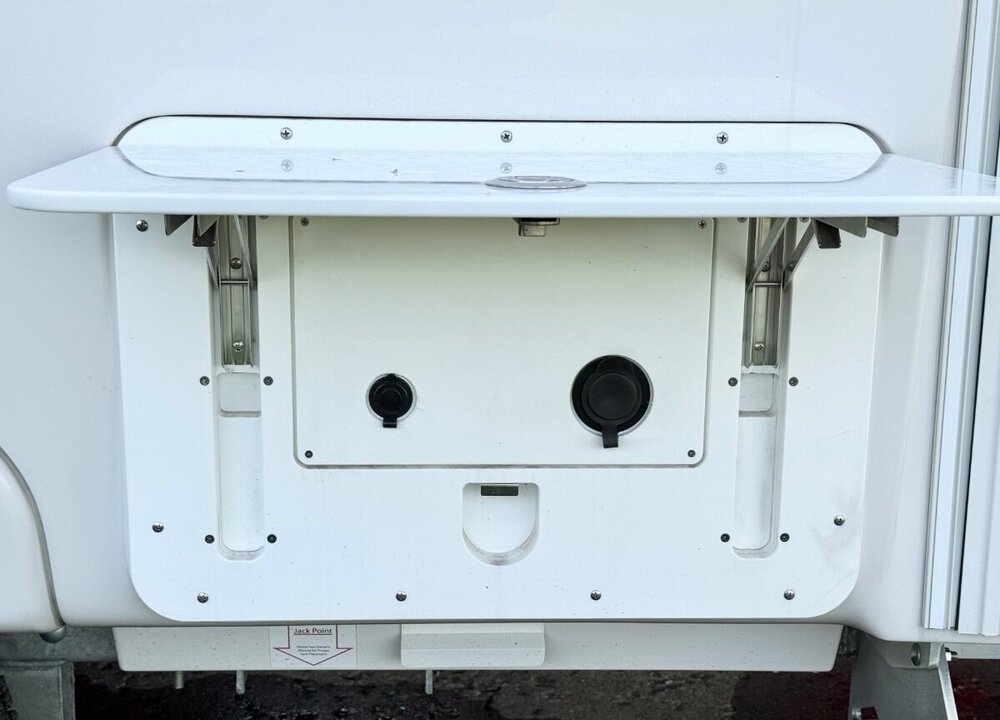
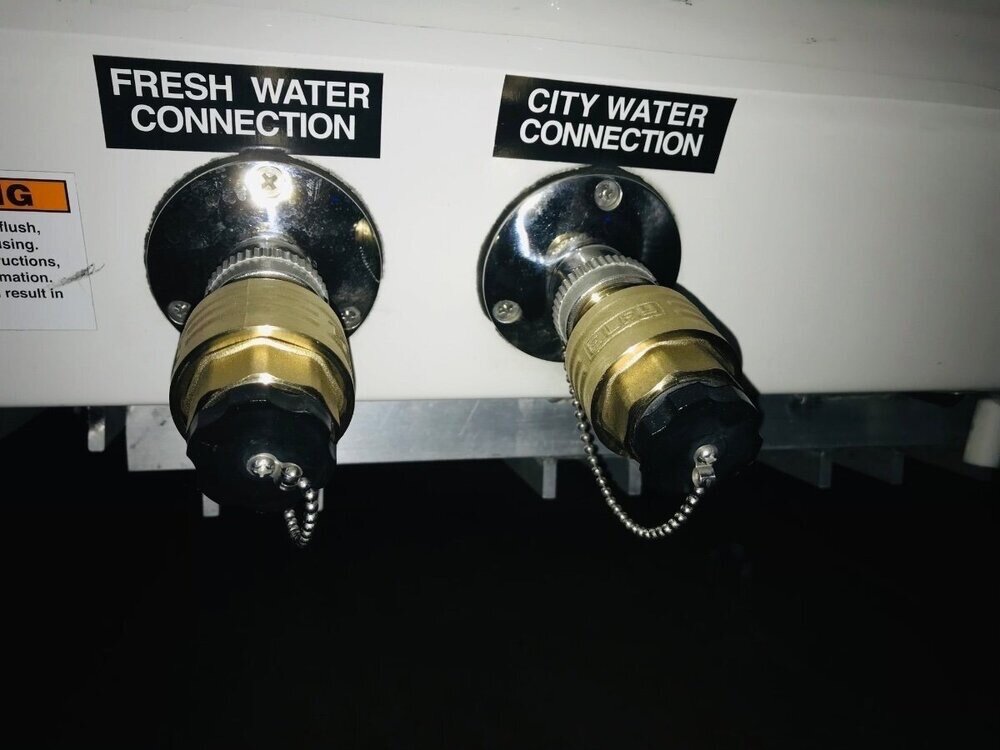






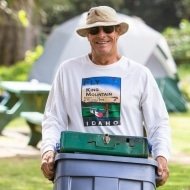
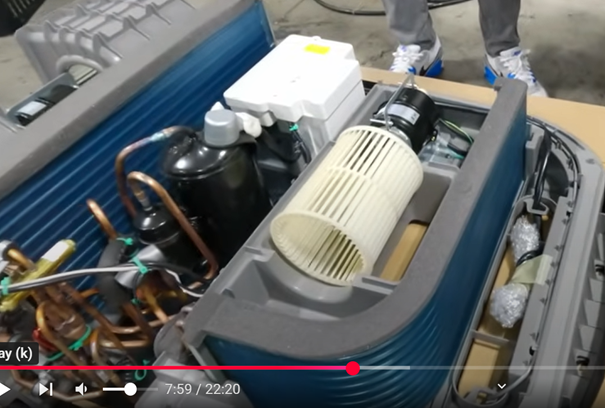











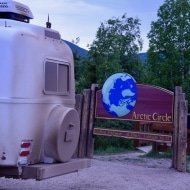
.thumb.png.eff4d7fbcbf1eb34d62e5c88cf70a0ee.png)